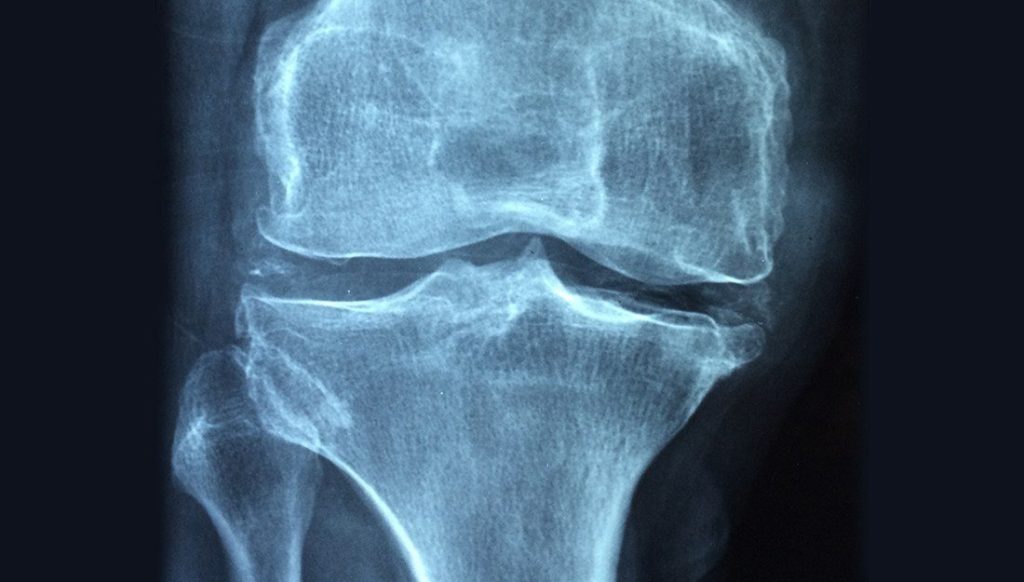
According to the Centers for Disease Control and Prevention (CDC), osteoarthritis affects more than 30 million American adults. It’s the most common form of arthritis, sometimes called degenerative joint disease, and can really limit your mobility if untreated. With so many people affected by this common disease, it’s best to know who is at risk and—for those affected—how to make the most of their condition. An expert from the Texas A&M College of Nursing explains just that.
What is osteoarthritis?
The first thing to know about osteoarthritis is that it’s a form of arthritis—which is an umbrella term for joint inflammation. Osteoarthritis is caused by damage or breakdown of cartilage that is between the bones.
“The cartilage offers lubrication for the bones and allows them to move more comfortably,” said Wanda Seaback, MS, registered nurse and clinical assistant professor at the Texas A&M College of Nursing. “When the cartilage starts to break down, the bones start rubbing and grinding, and that causes complications.”
Osteoarthritis can occur in numerous joints, but is typically present in the shoulders, hands, knees, hips and—less commonly—in the feet. The main symptoms are stiffness, pain and aching, decreased range of motion and swelling in the affected joints.
“Osteoarthritis gets worse over time,” Seaback said. “If you develop osteoarthritis, it’s very important to get ahead of the condition so it’s not debilitating.”
Risk factors for osteoarthritis
The main risk factor for osteoarthritis is age, with most cases happening in adults over 60 years old. Other factors such as family history and gender can increase your chances of developing osteoarthritis (women are more likely to develop the condition than men). However, there are also lifestyle factors that can exacerbate osteoarthritis or increase your chances of developing the condition.
“Whether you have osteoarthritis or are worried about getting it, being overweight or inactive can play a big role in how it’s managed,” Seaback said. “Being overweight adds pressure on the joints, particularly on the hips and knees. So being active and at a healthy weight can really take off some of the pressure and improve your joints.”
Treating osteoarthritis
The swelling and pain from osteoarthritis can be overwhelming if it goes untreated, but a lot of the treatment for this condition is done at home.
“Movement therapy, alternating heat and cold and over-the-counter pain medication are the best courses of action,” Seaback said. “If osteoarthritis gets more severe, then prescription pain medication, injections or surgery may be necessary.”
Corticosteroid injections offer quick relief for 6 to 12 weeks, but they shouldn’t be used frequently. Using them too often may damage cells in the area that makes cartilage, and after multiple uses they become less effective. Surgery is often known as a “replacement surgery” and typically occurs in the hip, knee and shoulder. The surgery replaces the ends of bones that are in a damaged joint and creates a new joint surface.
When it comes to physical activity, Seaback recommends starting slow and maybe even hitting the pool.
“Water aerobics or tai chi are both great activities to look into if you have osteoarthritis,” Seaback said. “If someone doesn’t become active, the problems can snowball into the musculoskeletal system and can increase the risk of other dangers—like falling.”
Talking to your provider
Getting older can be a difficult process, and a lot of issues can come up along the way. When you start getting into your later chapters of life, it’s best to address your osteoarthritis concerns early with your health care provider and ask about self-management education classes or physical activity programs to manage your condition.
“If you catch your osteoarthritis early, you have the best chance of getting it under control,” Seaback said. “Living a healthy, active lifestyle can help you manage your osteoarthritis, which can then allow you to be more active, forming a healthy circle.”
###
This story by Dominic Hernandez originally appeared in Vital Record.




